
UFSC (Federal University of Santa Catarina) is developing a technology capable of generating energy from direct solar radiation and reflection from the various soil and climatic conditions of the country. This Friday (27) an experimental bifacial solar installation was inaugurated in Florianopolis in partnership with CTG Brasil.
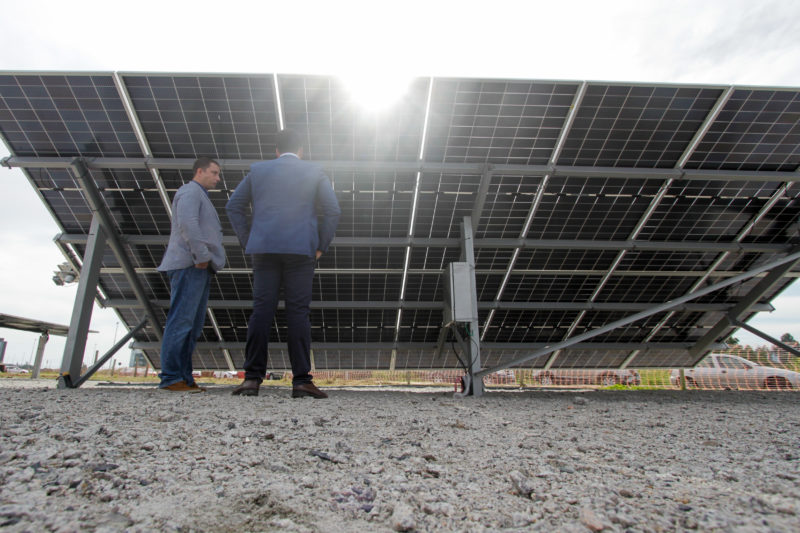 The technology is being studied on four different soils in Florianopolis. Photo: Leo Munoz/North Dakota.
The technology is being studied on four different soils in Florianopolis. Photo: Leo Munoz/North Dakota.The most innovative of the studies, led by UFSC Photovoltaic Laboratory coordinator Ricardo Rueter – beyond panels that absorb light from all directions – is the study of soil capable of maximizing energy production.
“These panels see light from both the front and the back. Is that the back is almost always in the shade. In this project, we are manipulating the soil to slightly increase the reflection. And if we earn 5% in doing so, this is already a big goal, because 5% in the productivity of the plant represents a greater competitiveness for the entrepreneur,” emphasizes Rüter.
The project was developed within the R&D department of Aneel (National Electricity Agency) in partnership with the University of Santa Catarina, Unesp Ilha Solteira and Senai through the Senai Renewable Energy Innovation Institute.
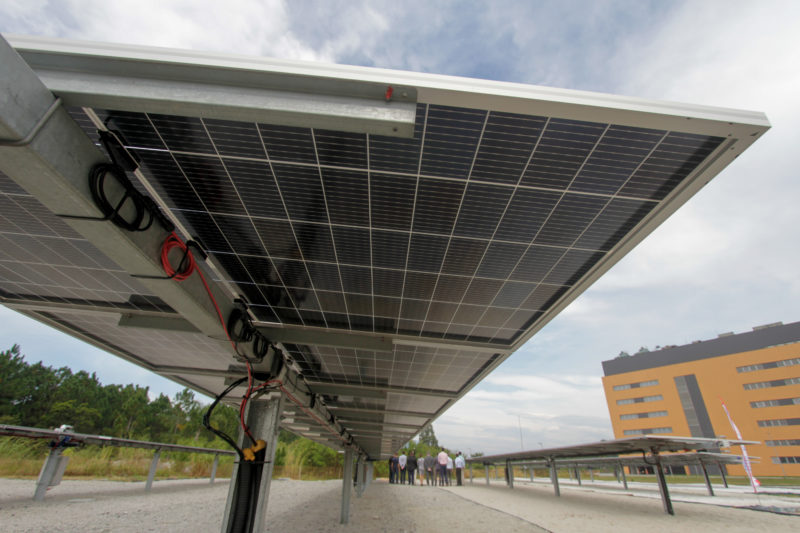 The results of the analysis will enable the implementation of the plan for future solar power plants throughout the country, stimulating the development of the photovoltaic energy production sector.
The results of the analysis will enable the implementation of the plan for future solar power plants throughout the country, stimulating the development of the photovoltaic energy production sector.With an investment of 7.2 million reais, the plant, with solar tracking and panels that rotate around an axis, is located in the UFSC solar photovoltaic laboratory in Cachoeira do Bom Jesus, in the north of Santa Catarina.
The professor explains that four different soils (white gravel, kaolin, sand and dark gravel) were examined with two types of photovoltaic modules in order to analyze the working conditions during the four seasons of the year.
“Every second, all this paraphernalia that you have here on this wall is capturing generation data, solar radiation sensors, wind sensor, wind speed sensor,” Rueter says.
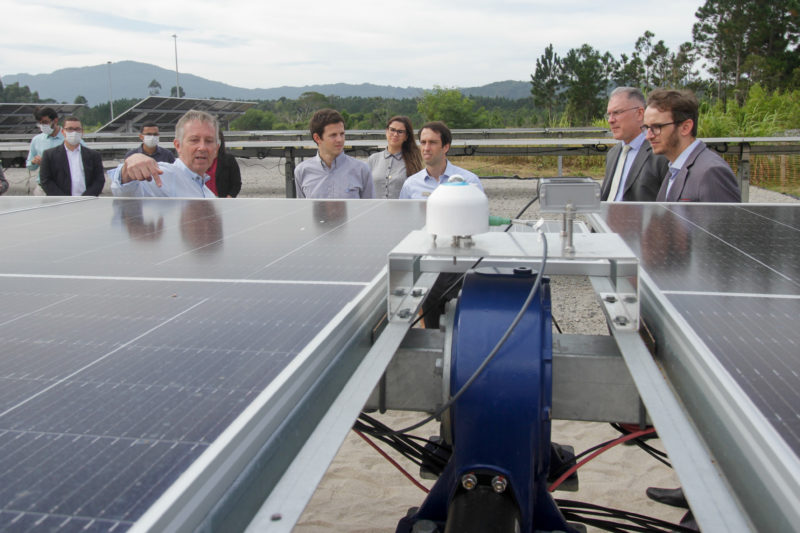 Factors such as degradation, dirt, equipment operation under extreme radiation and high temperature conditions are evaluated, in addition to measurements of horizontal total radiation, albedo, air temperature, relative humidity and wind speed. Photo: Leo Munkhoz/North Dakota.
Factors such as degradation, dirt, equipment operation under extreme radiation and high temperature conditions are evaluated, in addition to measurements of horizontal total radiation, albedo, air temperature, relative humidity and wind speed. Photo: Leo Munkhoz/North Dakota.The tracking system also attracts attention because it protects the material from being pulled out of the ground by strong winds, so “if there is a strong wind, the trackers say ‘get into a protective position’ and they are all horizontal so as not to be rooted out.”
Other factors assessed in the study are degradation, dirt, equipment exposure to extreme radiation and high temperatures, in addition to measurements of horizontal global radiation, albedo, air temperature, relative humidity, and wind speed.
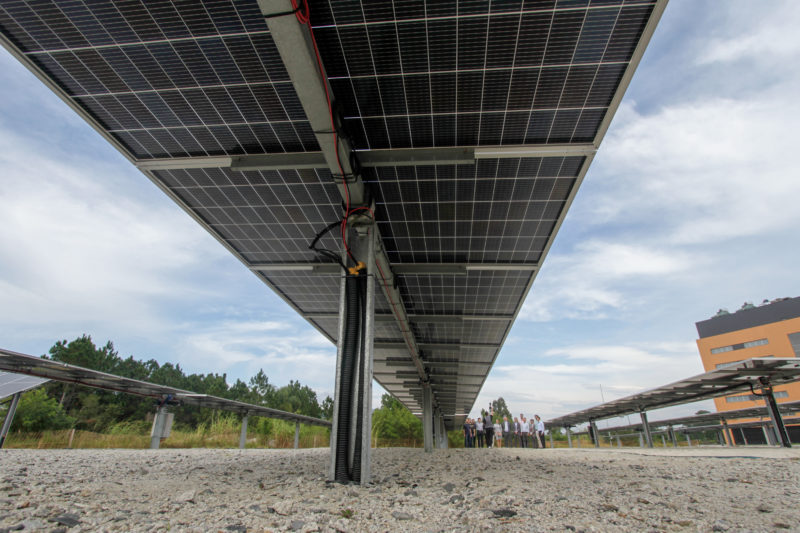 With an investment of 7.2 million reais, the installation with solar tracking and panels that rotate around an axis includes two types of photovoltaic modules in four different soils, so that working conditions can be studied throughout the year – Photo: Leo Munhoz / ND
With an investment of 7.2 million reais, the installation with solar tracking and panels that rotate around an axis includes two types of photovoltaic modules in four different soils, so that working conditions can be studied throughout the year – Photo: Leo Munhoz / NDThe result of the measurements will enable the implementation plan for the implementation of future solar power plants throughout the country, stimulating the photovoltaic energy production sector.
The speed and practicality of solar generation
Sergio Fonseca, director of new business development at CTG Brasil, says the research can be done anywhere in the world, but the city of Florianopolis was chosen because of the expertise of the researchers and the institution’s network of partners.
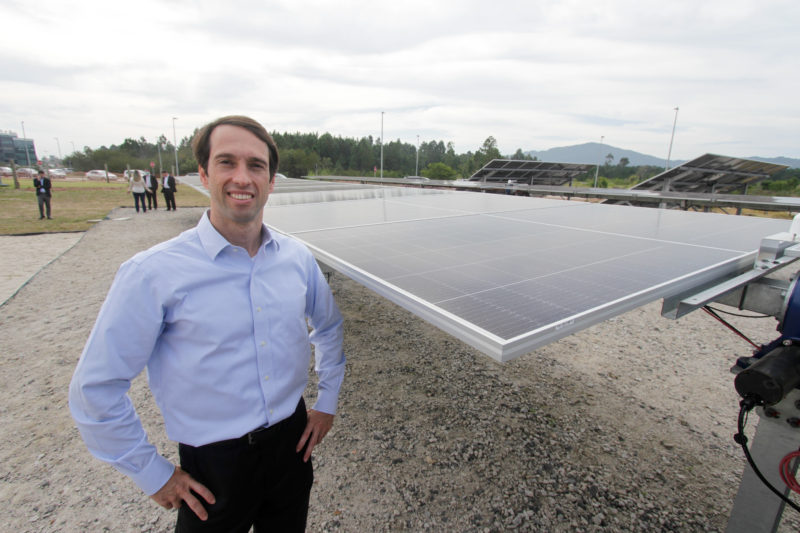 Sergio Fonseca, Director of New Business Development at CTG Brasil — Photo: Leo Munhoz/North Dakota
Sergio Fonseca, Director of New Business Development at CTG Brasil — Photo: Leo Munhoz/North Dakota“Center of excellence and knowledge led by Prof. Rüter with a network of suppliers. You can do something practical with international projection as well. Our idea is to actually create a study that will be published in the main newspapers of the world in order to prepare personnel not only for us, but also for our partners, and also to help in the viability of the projects,” emphasizes the director.
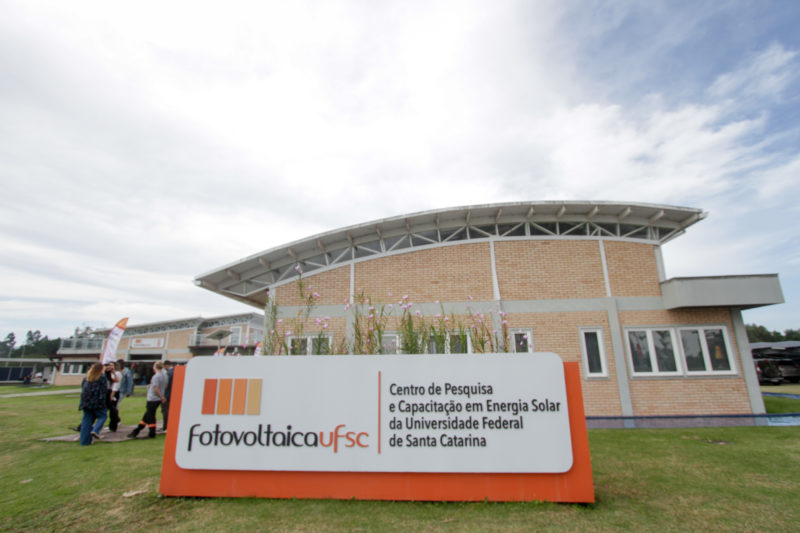 The solar power plant is located at the UFSC Solar Photovoltaic Laboratory in Florianopolis. Photo: Leo Munoz/North Dakota.
The solar power plant is located at the UFSC Solar Photovoltaic Laboratory in Florianopolis. Photo: Leo Munoz/North Dakota.Although solar radiation is about 15-20% lower in Santa Catarina than in Brazil’s best location for power generation, northeast sertana, the project coordinator notes that transporting energy is also expensive.
“In some situations, you can be competitive by installing it near the point of consumption, because then you don’t have the cost of transferring that energy.” Thus, the production of this type of renewable energy in the state continues to be profitable.
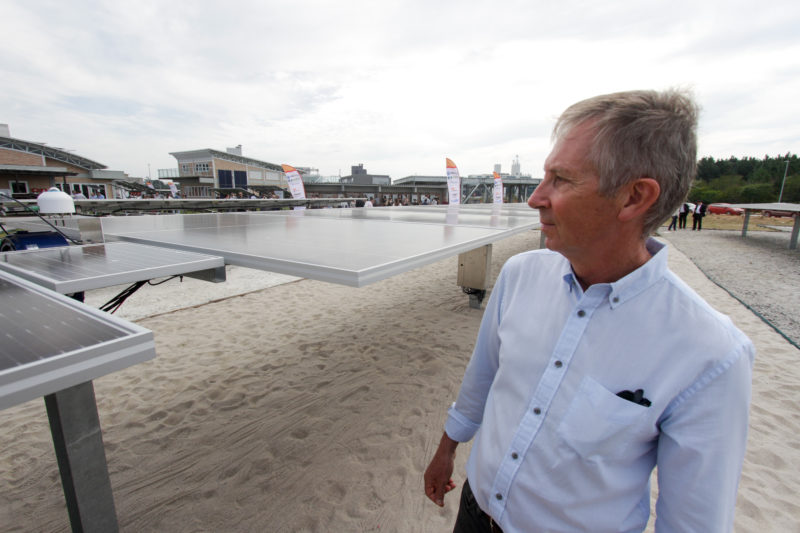 The project is led by Prof. Ricardo Rueter, Coordinator of the UFSC Solar Photovoltaic Laboratory. Photo: Leo Munkhoz/North Dakota.
The project is led by Prof. Ricardo Rueter, Coordinator of the UFSC Solar Photovoltaic Laboratory. Photo: Leo Munkhoz/North Dakota.At present, the state is using more roof panels, but as their cost declines, according to Professor Rueter, medium-sized or large solar power plants are beginning to appear in the state.
“Photovoltaic technologies are the fastest and most practical to deploy. You don’t need to build a big dam every time. You can do small projects and it’s very modular. So you can adapt to different types of climates, different types of terrain, with little dependence on natural conditions, except obviously for a good level of radiation,” adds the director of CTG Brasil.
Source: Ndmais